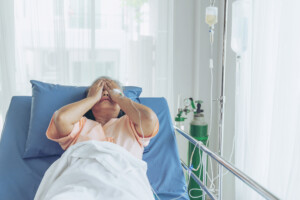What kills a lot of people? Avoiding health screenings. Even people with health coverage will avoid health screenings that can save their lives.
“There are important life-saving health screenings that you should do at every stage of life,” says Janice Johnston, MD, a family practitioner, and co-founder and medical director of Redirect Health.
Skin Cancer Screening
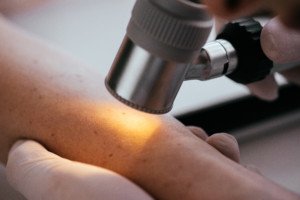
Shutterstock/LightField Studios
“A skin cancer screening should be done in your 20s, and it checks the skin for moles, birthmarks or other marks that are unusual in color, size, shape or texture,” says Dr. Johnston.
But this screening doesn’t stop when you hit 30. You should have your skin checked every year by a dermatologist, especially if you spent a lot of time in the sun during childhood or have other risk factors for skin cancer including melanoma such as living at high altitude, burning easily or having fair skin, and having blonde hair and blue eyes.
Having many moles, too, is a risk factor for melanoma, the deadliest skin cancer.
“Early skin cancer detection saves lives!” says Dr. Johnston.
Melanoma has a 10 year survival rate of 99 percent when caught at its earliest stage.
This killer can also arise on areas of the body that don’t get much sun exposure, which is why it’s important to have a physician examine you instead of only relying on monthly self-exams.
Though the screening should be done by a dermatologist, this doesn’t mean you shouldn’t ask your primary care physician to give your skin a sweeping check during the yearly routine health exam.
Why many people avoid skin exams:
• Incorrectly believing they’re at low risk. This includes people who keep themselves covered when outdoors, neglecting to recall how much sun they got in childhood.
It also includes dark skinned people. People with dark skin can get melanoma, squamous cell carcinoma and basal cell carcinoma.
• They find monthly self-exams a hassle, especially if they have many moles.
• They’re afraid of what a doctor might find.
Solutions: Get an annual skin check. Examine your moles and overall skin every month. If you have many moles, consider serial digital dermoscopy.
Testing for Sexually Transmitted Disease

Shutterstock/Chinnapong
“Include STD testing as a routine health screening in your 20s,” says Dr. Johnston.
“A Pap smear screening is recommended for women in their 30s.
“The new updated Pap smear tests for two different types of cancer and has already reduced the incidence of cervical cancer by more than 60 percent.”
The Pap smear is a truly remarkable life-saving procedure. It’s easy from the perspective of the practitioner and takes only a few minutes.
It can reveal early precursors to cervical cancer: atypical cervix cells, which are graded by I, II and III, with “CIN I” being the lowest grade.
Protocols are in place for managing all grades to prevent the development of cervical cancer.
This is the time to catch cervical cancer – before it happens, rather than once it has spread beyond the cervix, making it difficult to cure.
Why many women avoid Pap smears:
• Embarrassment
• Anticipation of physical discomfort
• Lack of knowledge of just how effective the Pap smear is at preventing cervical cancer
• Underestimating the dangers of cervical cancer
Solutions: Consult with your OB/GYN about a Pap smear protocol for your individual history.
To ease discomfort, request that the practitioner use a lot of lubricating jelly and a pediatric speculum.
Asking the clinician to narrate the procedure as it unfolds will help ease anxiety.
Viewing an illustration of how it’s done will also ease tension; knowledge is power.
Diabetes and Blood Pressure
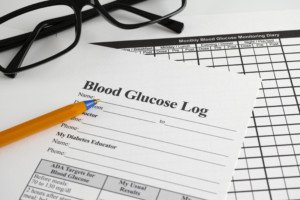
Shutterstock/Ekaterina_Minaeva
“In your 40s and above, it’s important to screen for diabetes and blood pressure,” says Dr. Johnston.
Blood pressure should not be above 130/80 mmHg, says Dr. Johnston.
Some practitioners draw the line at 125 for the systolic or top number.
High blood pressure (hypertension) almost always presents without symptoms, yet is a major risk factor for stroke and chronic heart failure.
Though diabetes causes the well-known symptoms of excessive hunger, excessive thirst, frequent urination, unexplained weight loss and unexplained fatigue, many people who have some or all of these symptoms never suspect diabetes because these symptoms can fly under the radar or be mistaken for symptoms of life stress. The A1c test can detect diabetes or prediabetes.
Why many people avoid getting blood sugar and blood pressure checks:
• They “feel fine.”
• Hypertension and diabetes don’t run in their family.
• They’re thin, don’t smoke and/or get regular exercise.
Solutions: Get annual health checks – which will include testing for diabetes and high blood pressure.
Buy a home blood pressure device and, when rested, take your blood pressure every month or so; don’t obsess about it.
Mammograms and Monthly Breast Exams
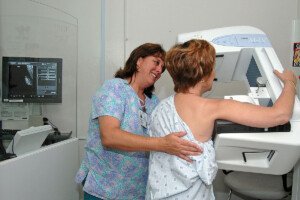
Women should begin having regular mammograms at age 50, though some research suggests that a baseline mammogram should be given at 40, and then every two years after that, up to 50, and then yearly after that.
The precise protocol should be discussed with one’s gynecologist, especially since a family history of breast cancer significantly raises the risk.
Annual mammograms do NOT replace monthly self-exams! A mammogram can miss a malignant tumor, in that the image could show dense breast tissue concealing a tumor (both appear white on the image).
The radiologist, too, can miss it, since a tumor mimics the appearance of dense breast tissue.
Why many women avoid mammograms:
• They’ve heard they’re painful.
• They’re embarrassed about their body weight.
• They’re afraid of what the mammogram might find.
• They think the radiation exposure might cause cancer.
• Nobody in their family has ever had breast cancer.
Solutions: Consult with your OB/GYN regarding mammogram screenings – then start getting them.
Do monthly self-exams. Ask your doctor what to look for. Don’t skip a mammogram year, thinking that one missed mammogram won’t make a difference.
If you have dense breasts (a mammogram will reveal this; ask for the report), you can get supplemental ultrasound breast screening.
The Colonoscopy
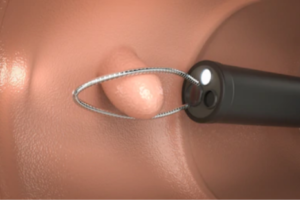
Shutterstock/Phonlamai Photo
“Currently, only about 50 percent of adults who should have colonoscopies get them,” says Dr. Johnston.
“That means cancers are being missed and people are getting sick who don’t have to.”
When caught early, colon cancer is highly curable. The problem is that early colon cancer usually doesn’t cause symptoms.
But a colonoscopy will usually catch it. In fact, a colonoscopy will show precancerous polyps years before they might transform into cancer.
During the colonoscopy, these polyps are removed. Colonoscopies should start at 45 for people of average risk.
If a family member had colon cancer, tell your doctor, even if you’re in your 30s.
Why many people avoid a colonoscopy:
• They anticipate pain.
• The concept of “something going up my anus” scares them.
• They’re afraid of what the doctor might find.
• They don’t want to bother with the preparation.
Solutions: Get your colonoscopy! Consult with a gastroenterologist about when this should begin, based on your personal and family history.
Never skip a colonoscopy just because the intervals between them are many years.
Remind yourself that the inconvenience of the prep is nothing compared to the misery of having part of your colon cut out to treat colon cancer.
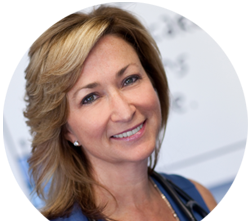 Redirect Health, the result of 20+ years of innovative work in healthcare, focuses on putting people first and their employers. By pushing back on the traditional healthcare system, Redirect Health has returned the focus to people and away from billing codes, unnecessary copays and expensive care.
Redirect Health, the result of 20+ years of innovative work in healthcare, focuses on putting people first and their employers. By pushing back on the traditional healthcare system, Redirect Health has returned the focus to people and away from billing codes, unnecessary copays and expensive care.
 Lorra Garrick is a former personal trainer certified by the American Council on Exercise. At Bally Total Fitness she trained clients of all ages for fat loss, muscle building, fitness and improved health.
Lorra Garrick is a former personal trainer certified by the American Council on Exercise. At Bally Total Fitness she trained clients of all ages for fat loss, muscle building, fitness and improved health.
.

